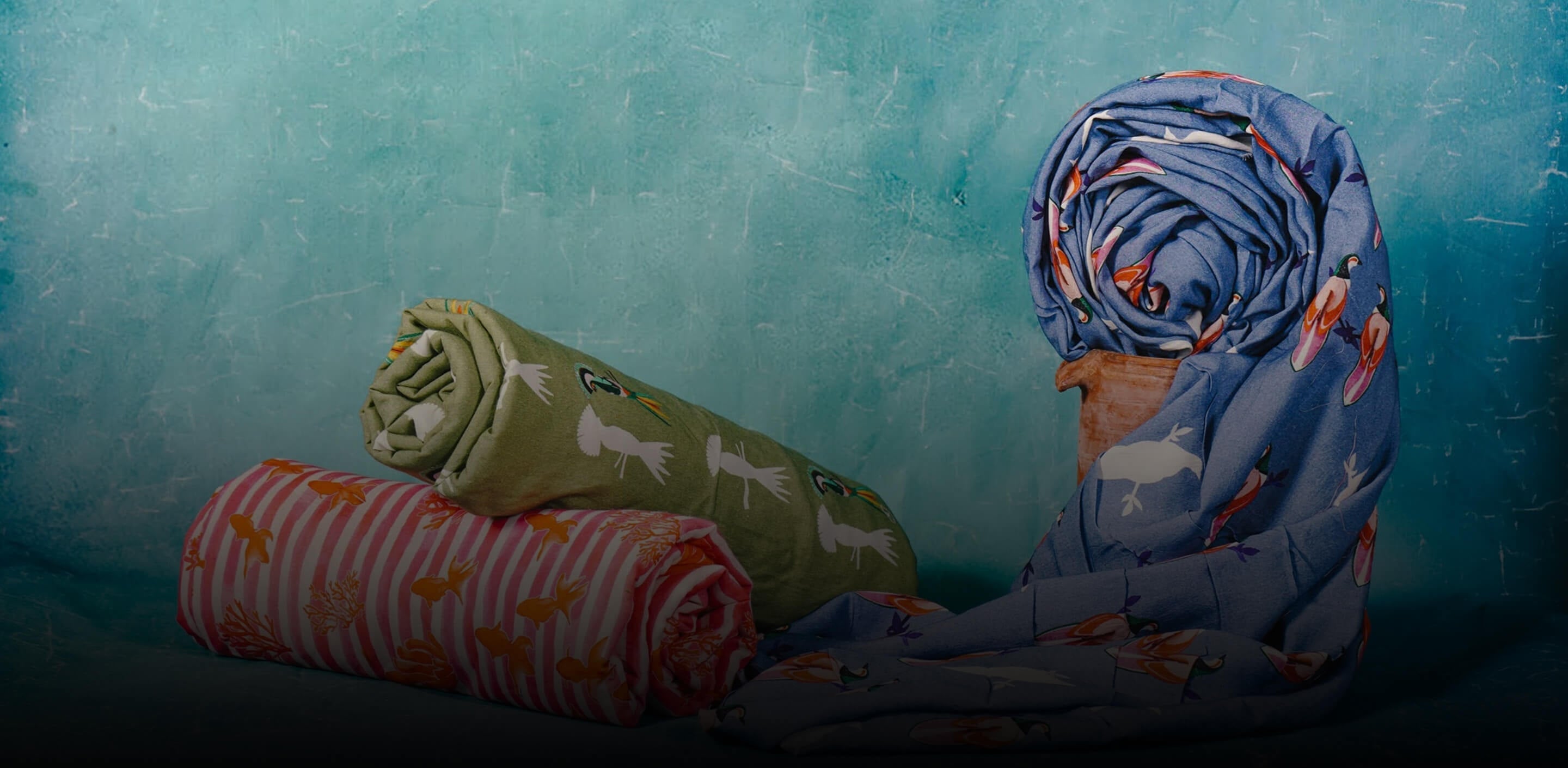Progress in digital printing technology has allowed the textile sector to make some remarkable advances. One of the most fascinating innovations in the textile industry is the possibility of printing on cloth digitally. As a result, there are now more ways than ever before to raise the bar on print quality for textiles and adapt to rising demand. Anything may be printed on fabric with ease and accuracy using digital printing technology.
The term "digital textile printing" means what?

Digital printing is the process of making tangible copies of digital images. Paper, cloth, plastic, film, or any other material might be used for the surface. Digital printing on textiles enables immediate transport of the finished design from the computer to the material.
There are no more stages in this process. Printing designs into clothing is as simple as printing an image onto paper. A dye-sublimation printer is used to digitally print the patterns on the fabric by transferring the pattern onto the fabric using heat. In order to successfully print on fabric with a digital printer, pretreatment is required. This allows for a wider range of color options and better ink maintenance by the fabric.
The printing of the future is quite different from the printing of old fabric. Since digital printing has so much promise, many business owners in the textile sector are making investments in this field. The textile sector is embracing digital printing technology to print innovative designs on saris and other garment materials, satisfying the demands of every country.
Production Methods for Digitally Printed Textiles
The steps required for digital textile printing are as follows:

Generating a Design
The first step is to digitize the paper layout or concept. There are two ways to make a design. This step in digitizing images is scanning them if no further editing is necessary. A printed version of the created file is then stored. The final touches are put on the image, including the basic color schemes and brightness adjustments. Since the design is the basis of the printing process, this is a crucial step.
Preparing the Fabric
The fabric must be selected and prepared before printing can begin. Chemical padding often accomplished using sizing components, is applied to fabrics at this stage. It makes the fabric more rigid, which helps with printing and ironing out wrinkles. Using a scraper, padding is done on the flatbed. This is an essential step in making the textile, the second base.
Printing
In printing, an image is transferred to a substrate with the aid of a printer server; the printed cloth is then allowed to dry. First, the linen has no sags or folds; it has been expertly positioned. Afterward, the printer's head settings are modified to account for the material's density.
Dye Fixation
Dye Fixation In the printing process, dyes have very little time to bond to the fabric's surface; if we use this fabric, the dye will be washed off over time. Therefore, it is essential to fix the dyes to achieve high fastness properties.
Steaming is sometimes used to repair printed materials. In order to activate acid and reactive dyes, they are heated to a little over 100 degrees Celsius while still under atmospheric pressure. The condensed steam is absorbed by the thickening and hygroscopic chemicals in the printed patches as the process progresses. Due to the increasing layer thickness, dye baths are able to dissolve more colors and chemicals. At this stage, the dye molecules have worked their way deep into the fibers of the cloth from the surface. This is referred to as the fixation process.
Washing
The last and most crucial step in digital fabric printing is washing the material once the printing process is complete. Dye staining the white or unprinted areas may be avoided by first removing the thickener, auxiliaries, and loose paint before washing. Staining may be reduced by using reagents that keep the unfixed dye in the solution. When washing off acid dyes, for instance, adding 1 g/L sodium carbonate to the initial solution prevents the protonation of amino groups on nylon, wool, or silk, hence removing potential dye sites.
FAQ
What is the future of digital printing?
By 2032, the global market for print and printed packaging is expected to reach $230.5 billion, with digital print contributing about a quarter of that value. It is expected that these percentages will have increased to 74.1% of the value and 77.5% of the volume, respectively.
What is the fastest-growing method of printing on textiles?
All the way from fabric yardage to finished clothes, digital printers can do it all, and they can even print in black and dark grayscale. When it comes to digital garment printing, direct-to-garment t-shirt printing is cutting-edge and rapidly expanding.
Which fabrics are best for digital printing?
We suggest using 100% cotton for digital printing. Whatever color your outfit is, cotton will keep the ink far better, providing you with a crystal-clear copy of your design.
We also happen to be a magnet for suggestions, and would love to catch yours….throw us yours on hello@fabriclore.com





